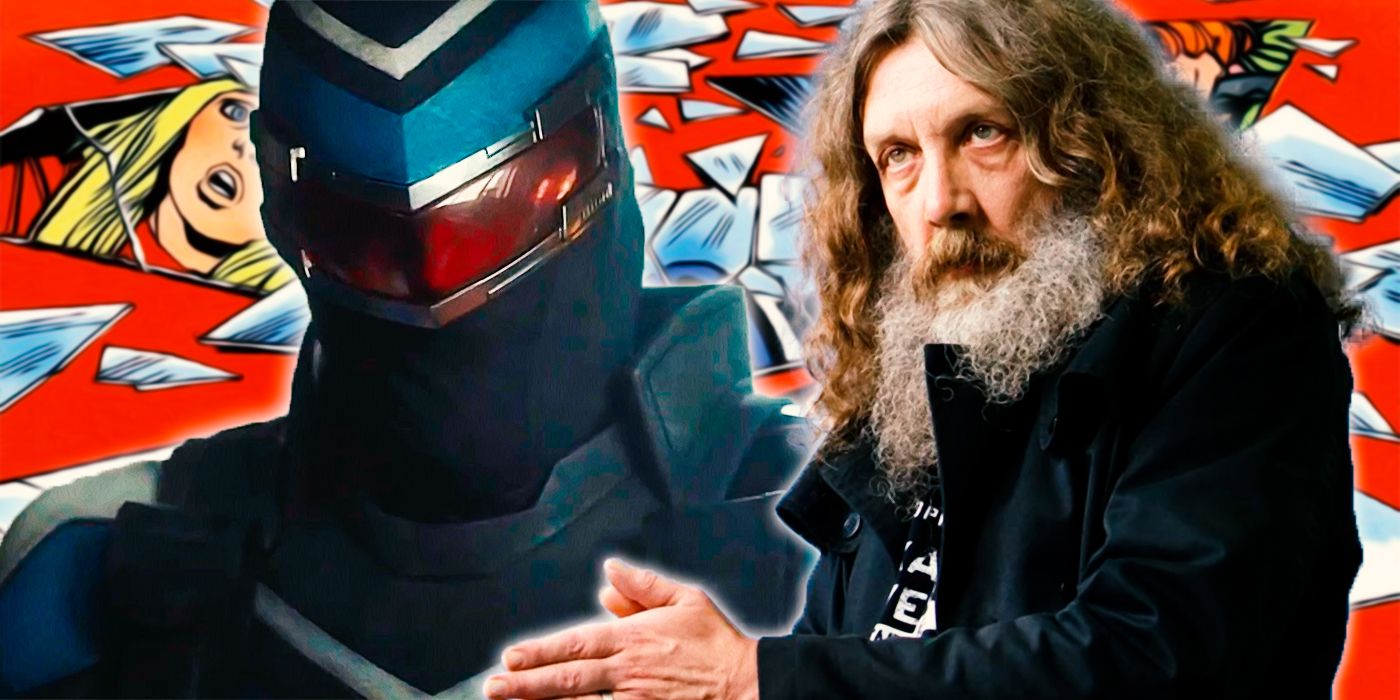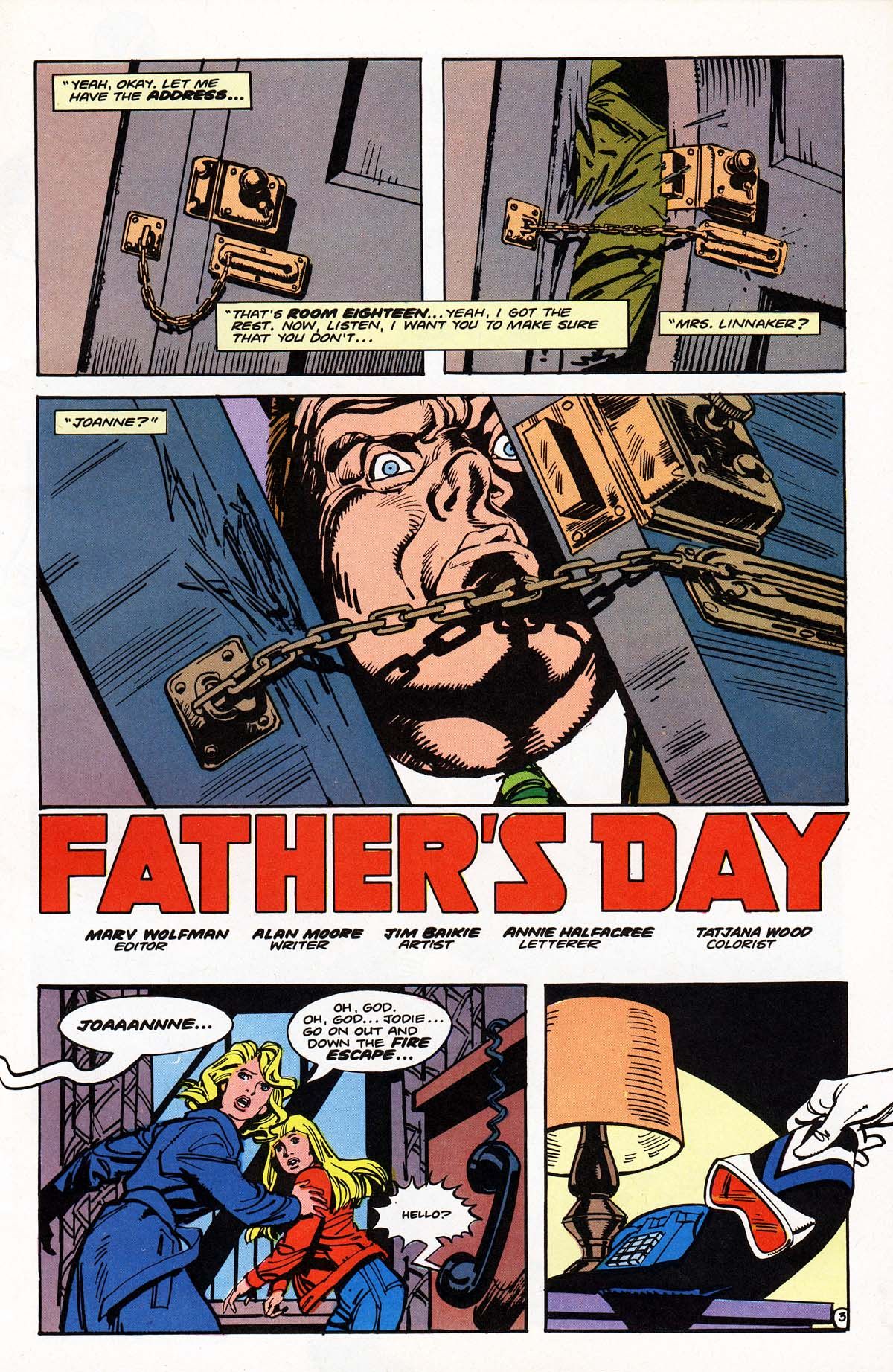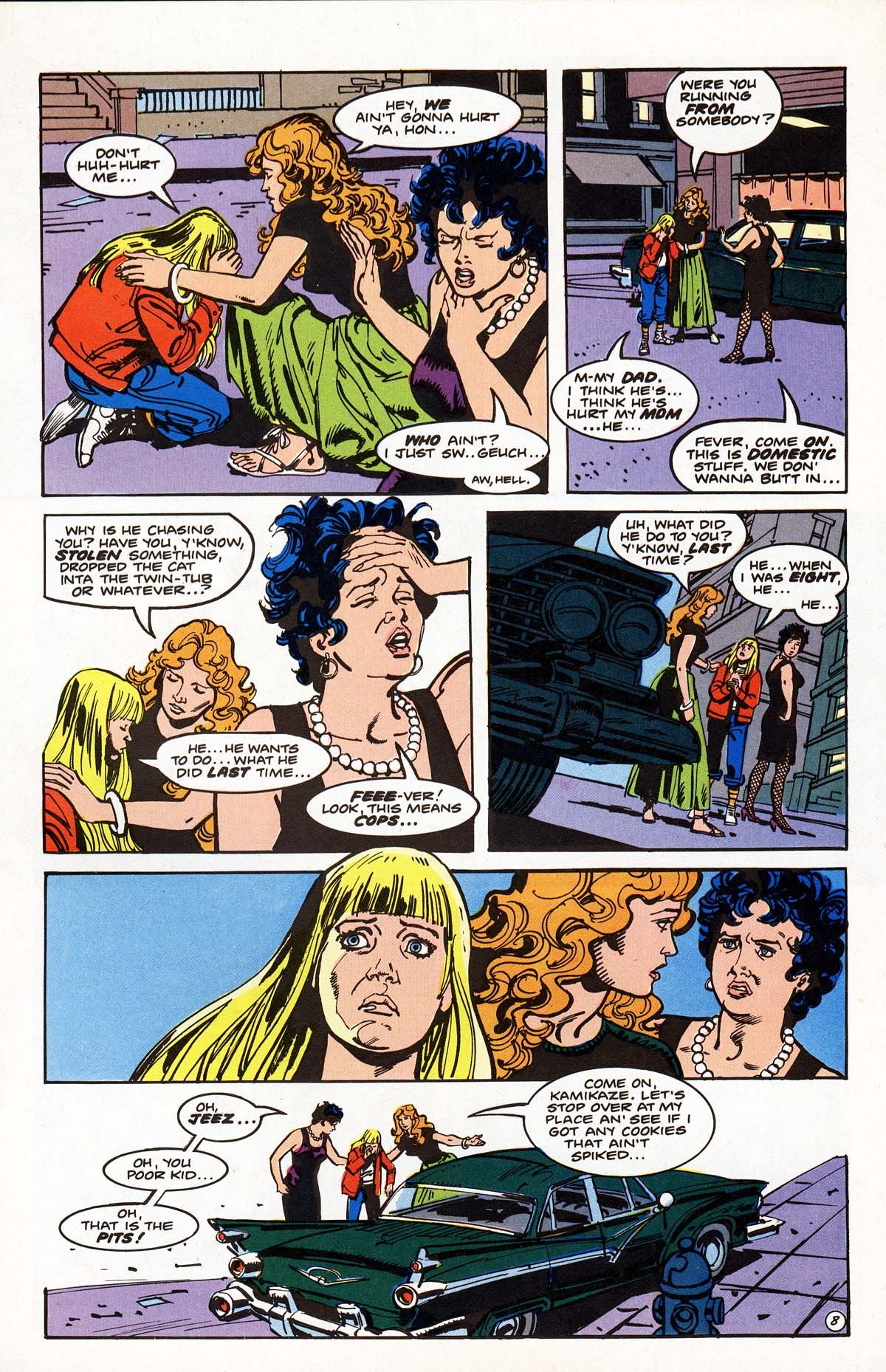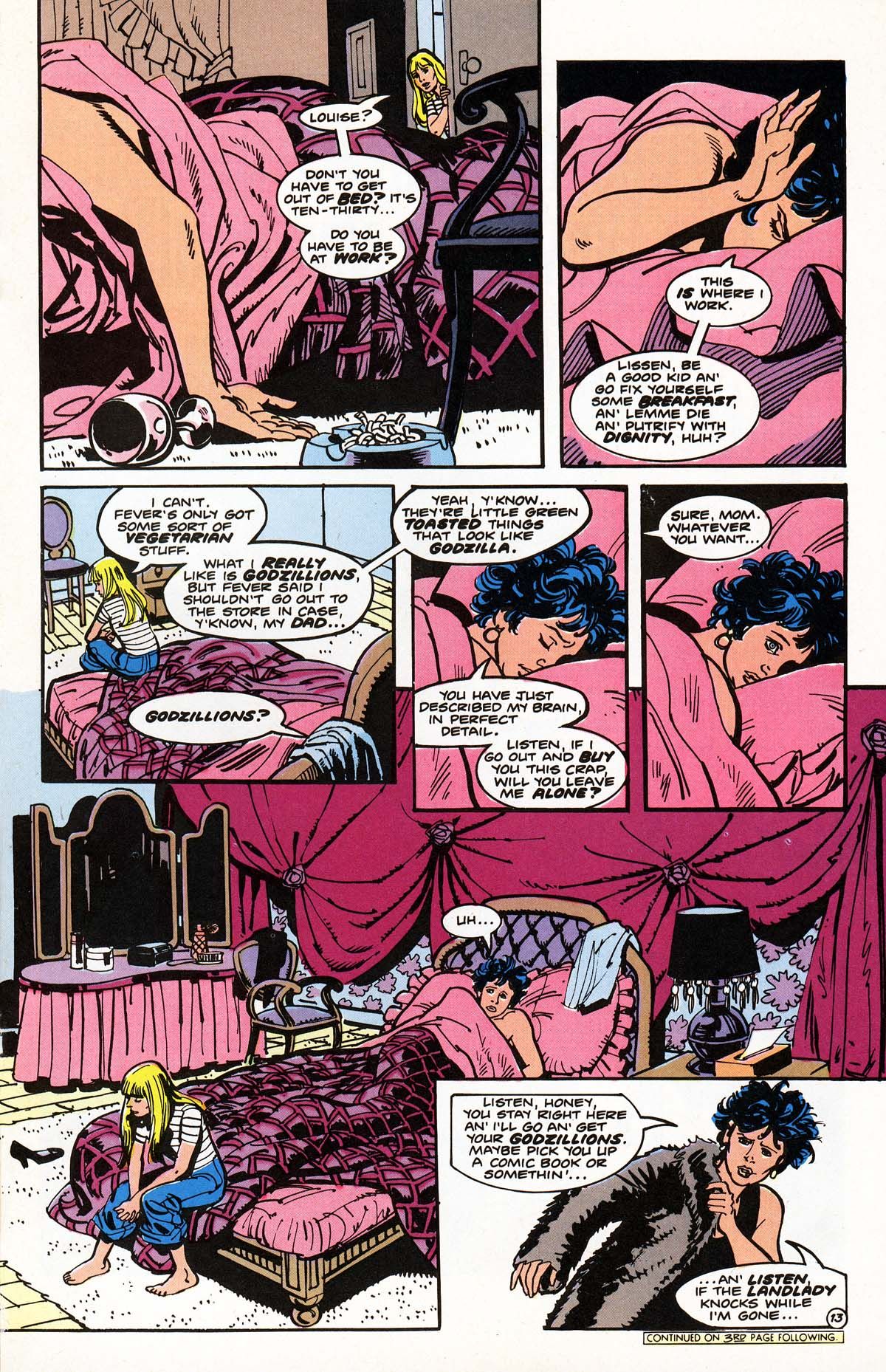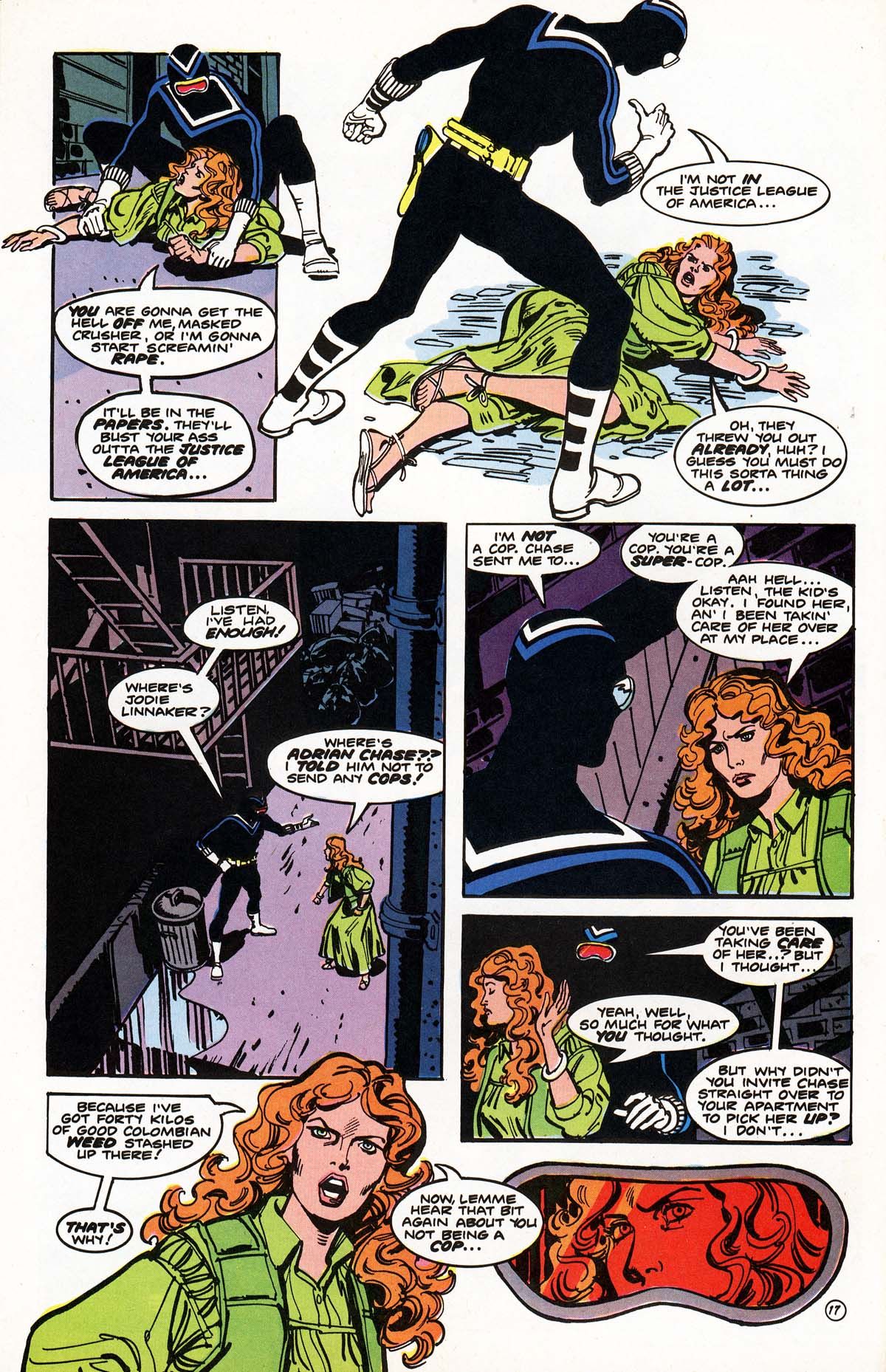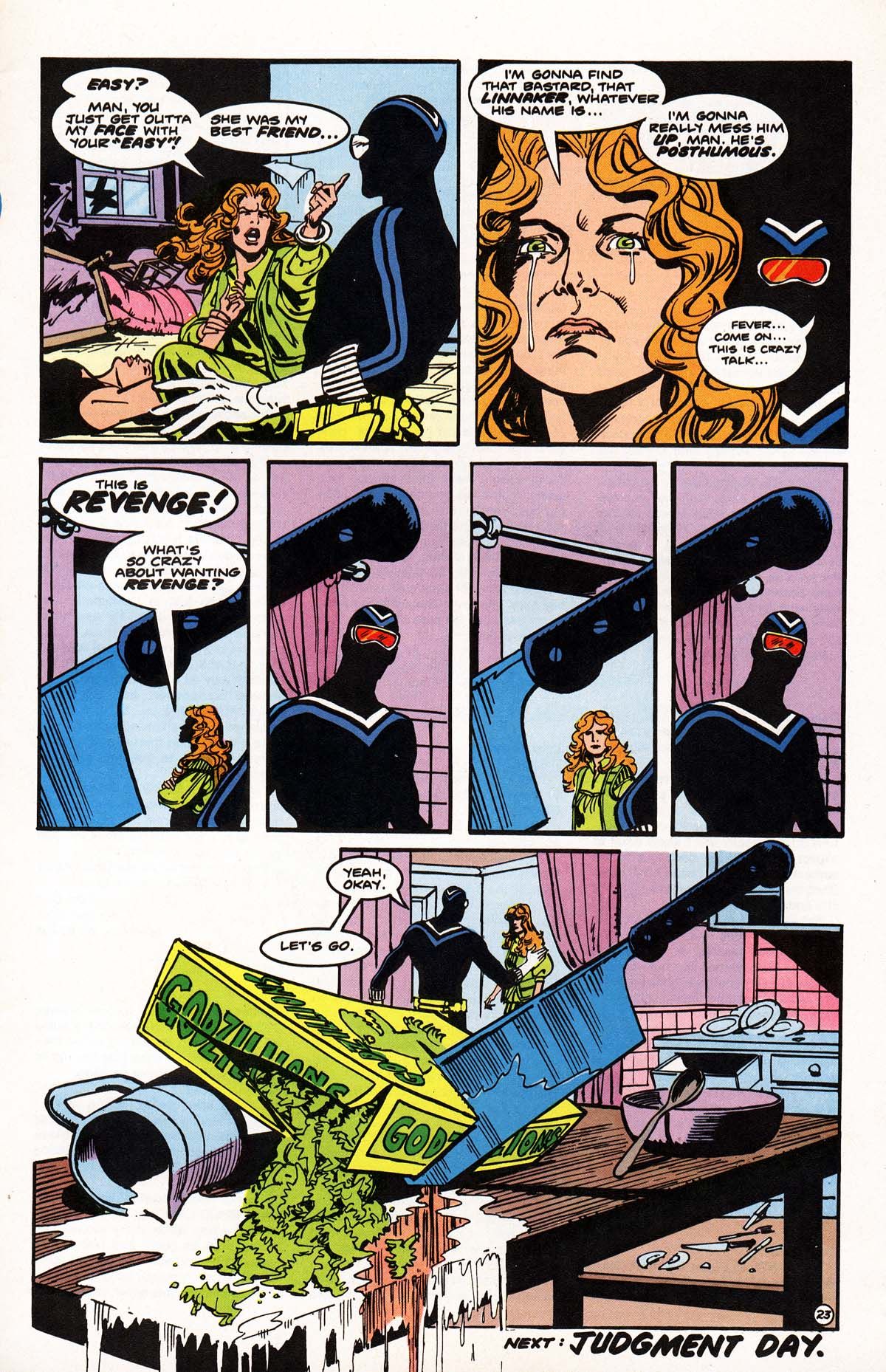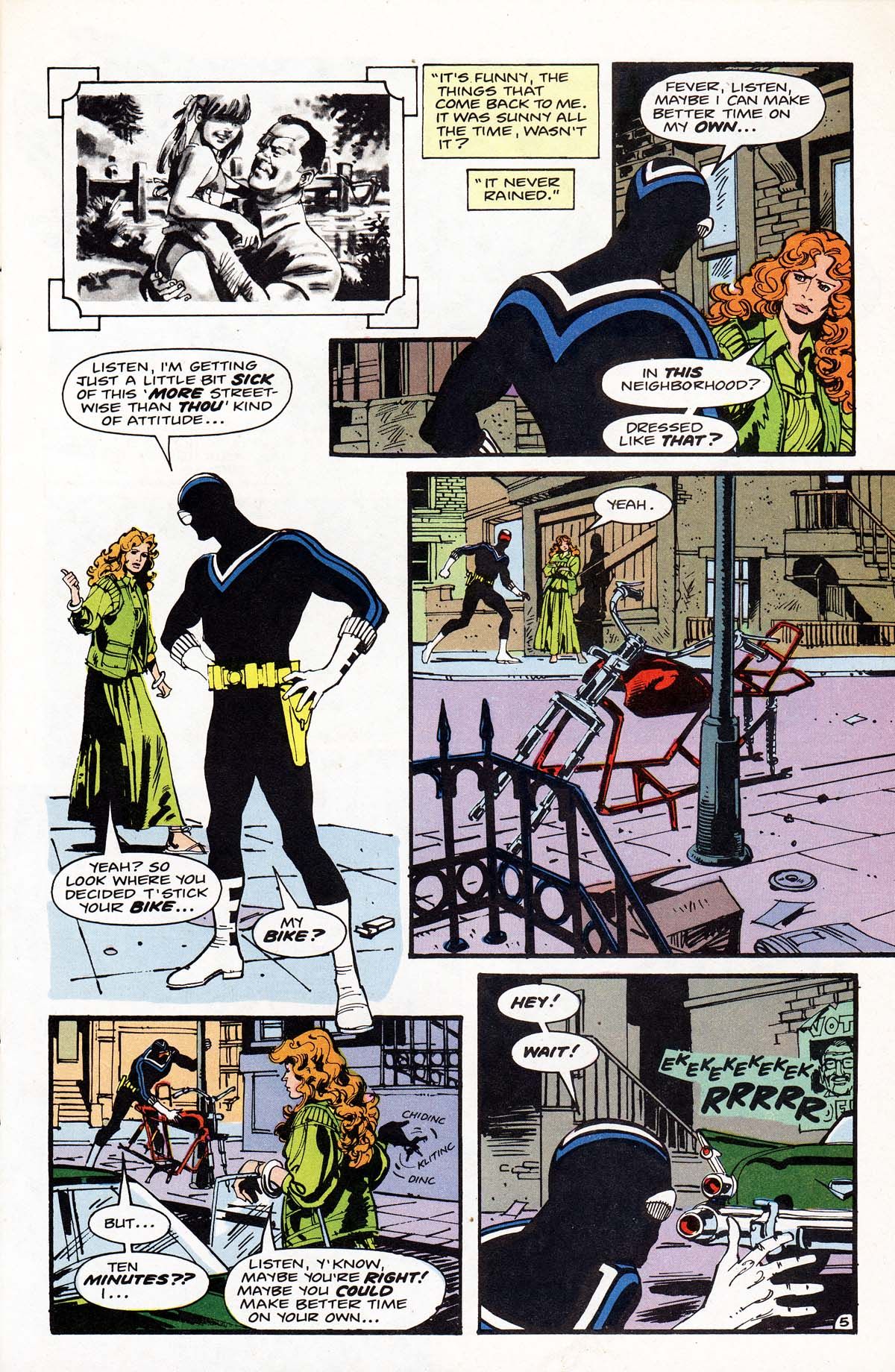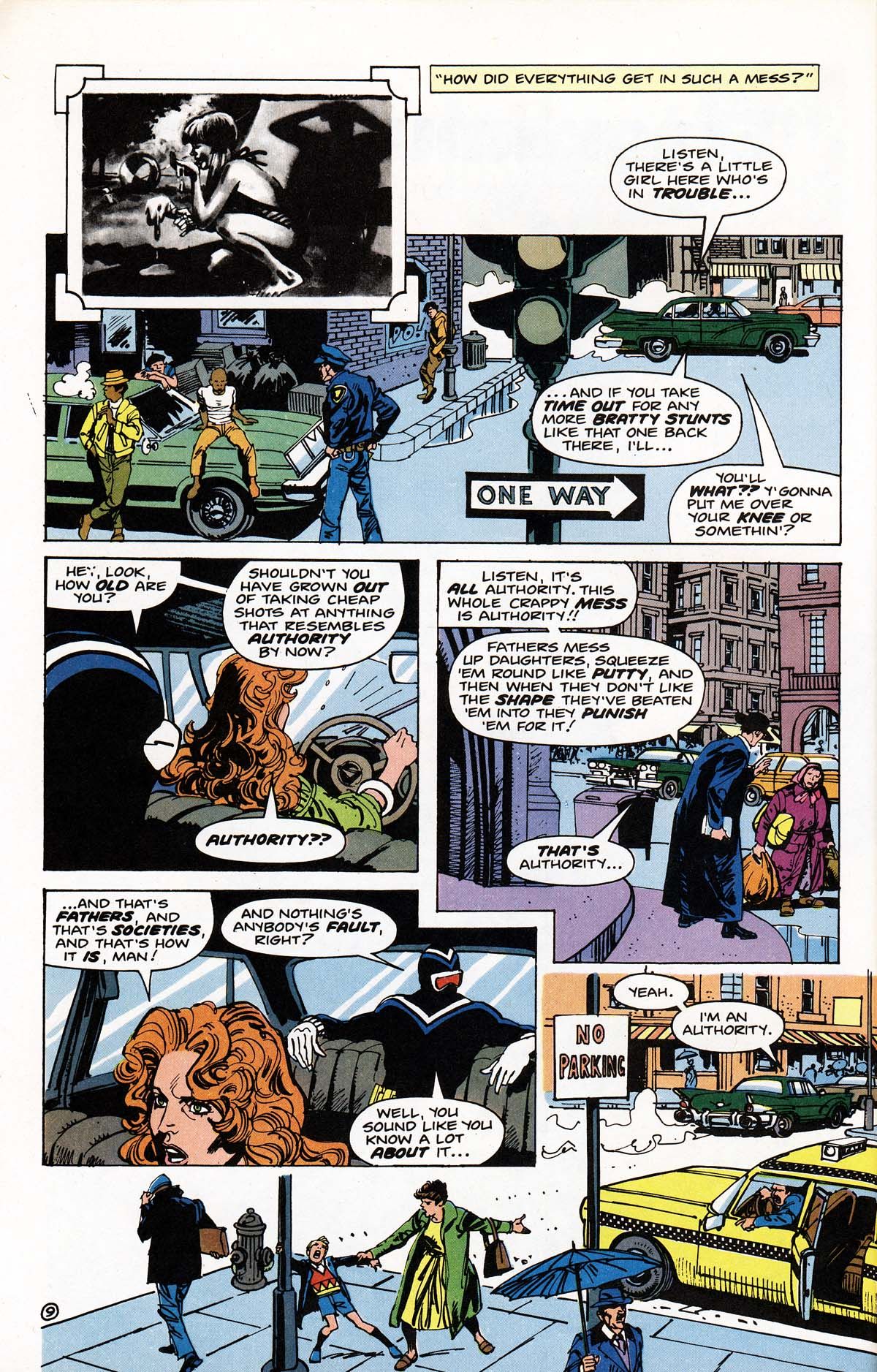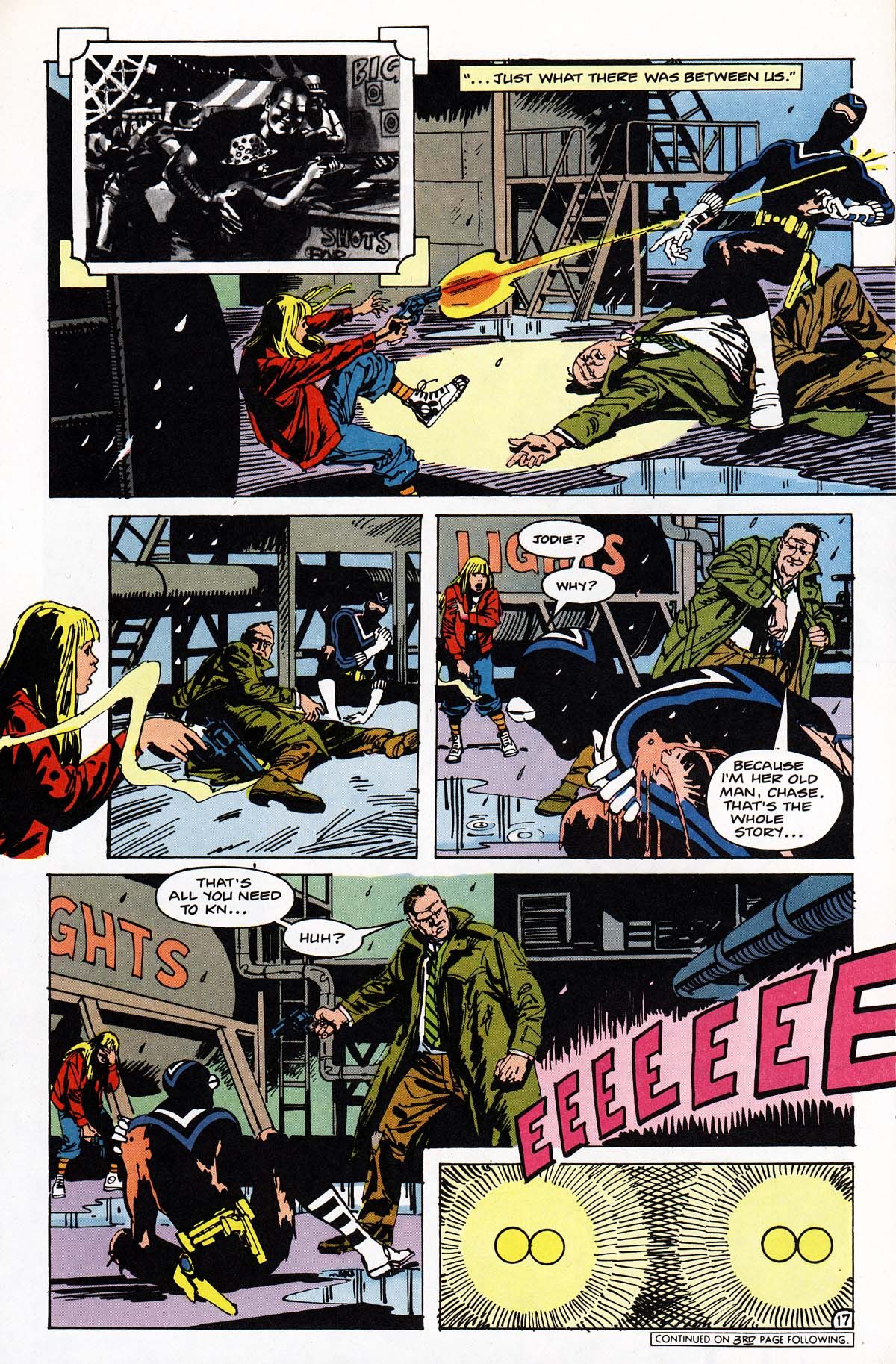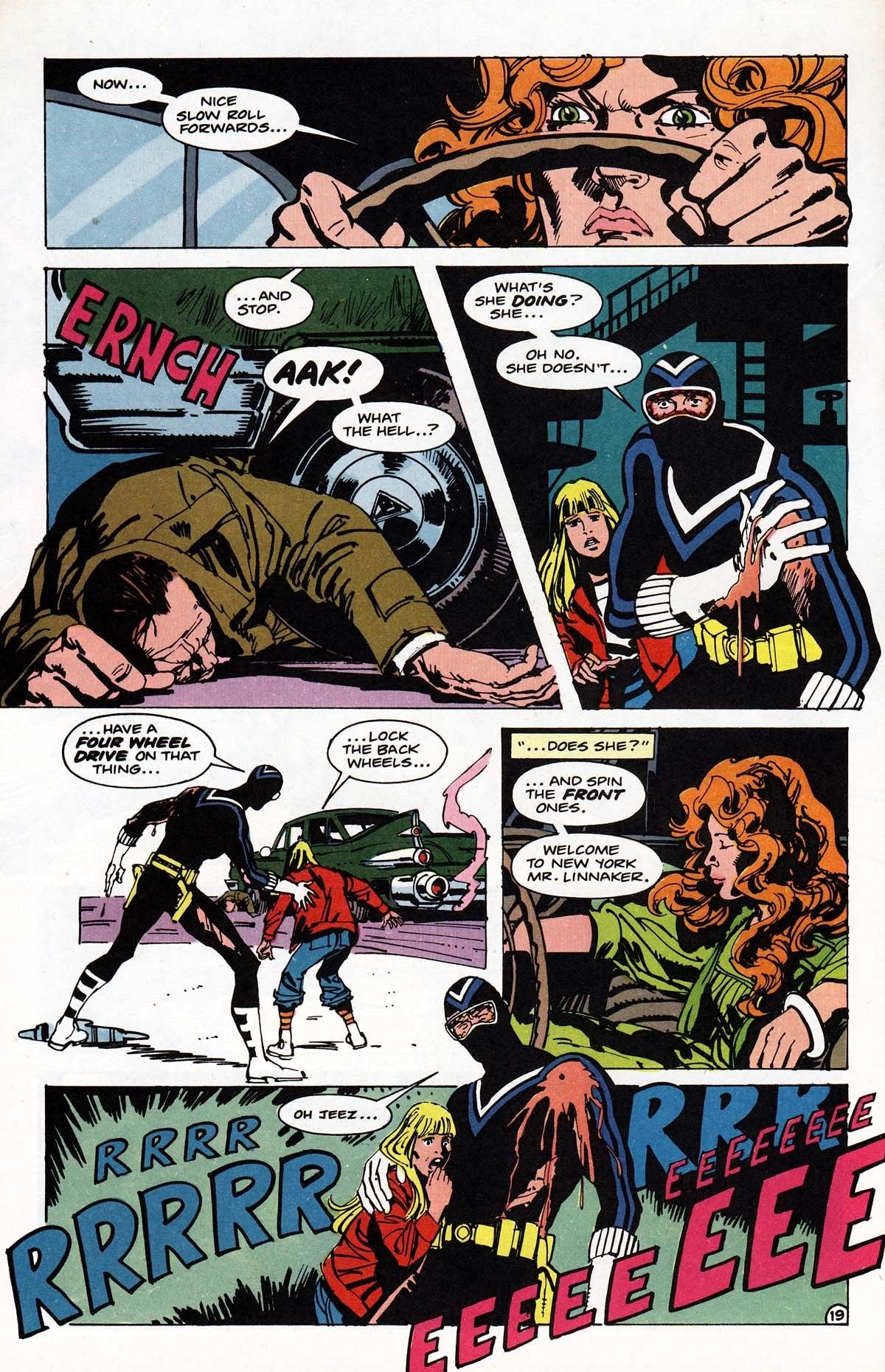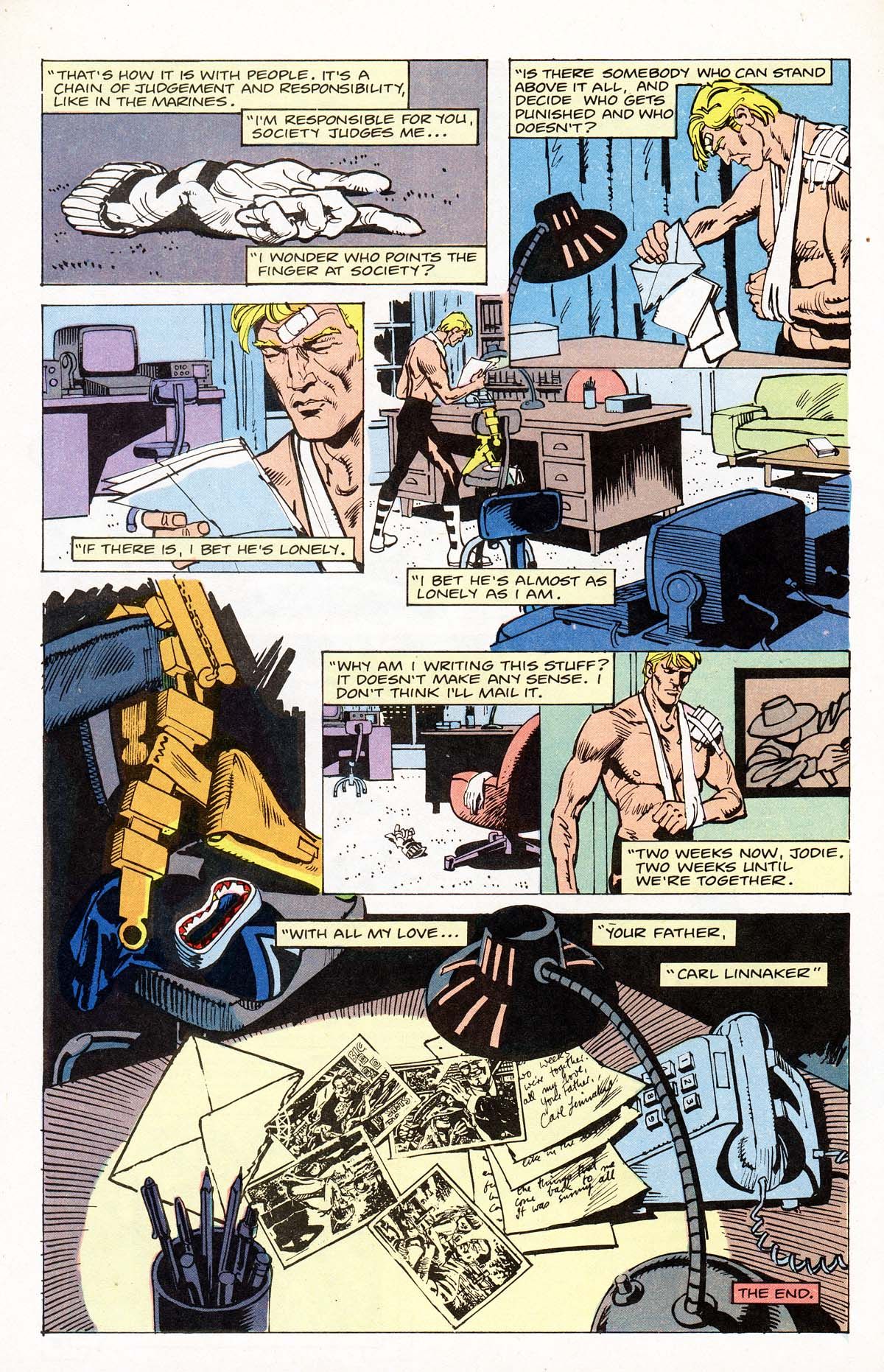Today, we look at how Alan Moore did a fill-in arc on Vigilante, decades before the character became a major part of the Peacemaker TV series, and showed how out of his element the anti-hero was in certain situations.
This is a feature called "Nothing is Better," where I spotlight aspects of classic comic books that have particularly impressed me.
Vigilante was created by Marv Wolfman and George Perez and debuted in their historic run on New Teen Titans in the 1980s. District Attorney Adrian Chase was someone who decided to work outside the law when his wife and kids were murdered. The Vigilante initially took painstaking care not to kill anyone, as a way by Wolfman to differentiate him from other similar vigilantes (like the Punisher). This continued past his original New Teen Titans appearances into his Marv Wolfman-penned ongoing series. However, in 1985, with Wolfman hard at work on the universe-altering Crisis on Infinite Earths, the writer had to drop the Vigilante ongoing series. Paul Kupperberg took over as the new ongoing writer with Vigilante #19, continuing on the series until it ended with #50 (which was a very DARK ending, which I wrote about recently).
WHAT WAS THE PROBLEM WRITERS HAD WITH VIGILANTE?
As I detailed in that aforementioned link regarding Kupperberg's run, Kupperberg's take on the Vigilante was basically that he didn't buy into the very notion of the character. That was the sort of thing that DC was allowing more and more of in the 1980s, giving writers the freedom to essentially deconstruct the very characters that they are working on in the comics AS they are working on them. Kupperberg's approach was essentially to have Adrian Chase devolve into madness, under the theory that you pretty much would HAVE to be mad to become basically the Punisher, just without the killing.
Alan Moore was probably the most famous example of a comic book writer doing deconstructionist work on his characters in the 1980s, exemplified by his historic run on Saga of the Swamp Thing, where (after quickly resolving the previous writer's unfinished story arc) he revealed that rather than Swamp Thing being a human being turned into a swamp creature, which it had been for the previous decade, Swamp Thing was actually a swamp creature that believed that it was a human being. That's a good hook period, but for the era, it was mind-blowing and Moore was quickly lauded by everyone around (Marv Wolfman calls him the “the sensation of the eighties" in the letter column for Vigilante #17). Thus, when he did a two-issue stint on Vigilante in #17-18 with artist Jim Baikie (like Moore, a creator who had been a popular British artist before getting a chance at doing work for American comics), Moore took that sort of unconventional approach to Vigilante in his fill-in arc.
HOW DID ALAN MOORE SHOW VIGILANTE OUT OF HIS ELEMENT?
The issue opens with a woman calling Adrian Chase in fear of her ex-husband being released from prison early. The husband had been sent to prison for molesting their daughter when she was eight and now that she was out, she felt that he was going to come for her again and she wanted Chase's help. He naturally turned into his Vigilante gear and headed to her apartment...
By the time he gets there, though, the father has murdered the mother but the girl (now roughly 13 or so) has escaped. She is rescued by two women, one a drug dealer (she goes by Fever, for "White Line Fever," as she later tries to claim it is a reference to her driving and not, you know, cocaine) and the other a prostitute...
There's a great sequence where the prostitute, who was not interested in getting involved, finds herself bonding with the girl despite herself (as the shell-shocked girl asks Louise if she can get her a special kind of cereal, while absentmindedly calling Louise "mom")...
Fever contacts Adrian Chase, which naturally leads to Vigilante meeting her. She takes advantage of his naivete, pretending to be pregnant when he hits her and then hitting him with a dirty shot and it is so clear how he doesn't fit into this world, despite how much of an "urban vigilante" he thinks of himself as...
Sadly, Louise's kindness is punished when the father sees her at the supermarket and follows her home and murders her, taking the girl with him. Fever wants revenge and Vigilante can't say otherwise...
In the next issue, as Fever and Vigilante hunt down the man and the girl, Moore takes Vigilante down a peg some more, having his bike stripped...
Throughout the issue, there are photos of the father and his daughter from happier days. Fever gives Vigilante a dressing down over the idea of authority...
When they finally track them down, Vigilante is beating up the father when the girl, Jodie, actually shoots Vigilante in defense of her father...
But Fever then mows him down with her car and then spins the wheels on his head. It's pretty nuts...
Jodie, of course, blames Fever for killing her dad and Fever is hilariously nonchalant about that. "Isn't that what we all wanted?"
In the end, Fever has go on the run (since she had a load of drugs at the apartment she shared with Louise) and Vigilante returns home to open up the letter that the man wrote to his daughter, filled with the photographs that had been interspersed in the issue throughout...
Dark stuff. Moore later noted that he regretted doing a story about child molestation in the pages of Vigilante, feeling it was inappropriate, but I think that he did a fine job of sort of showing how it WAS inappropriate, but still interesting to read.
Okay, folks, this is a feature that is a BIT less conducive to suggestions (as it really is about stuff that speaks to me, ya know?), but hey, feel free to still send suggestions for future installments, to brianc@cbr.com! Maybe you and I have the same take on things and I'll use your idea!

